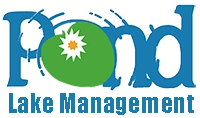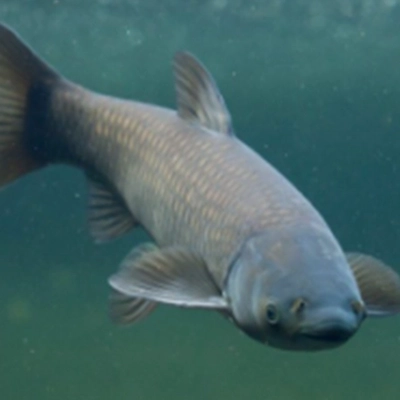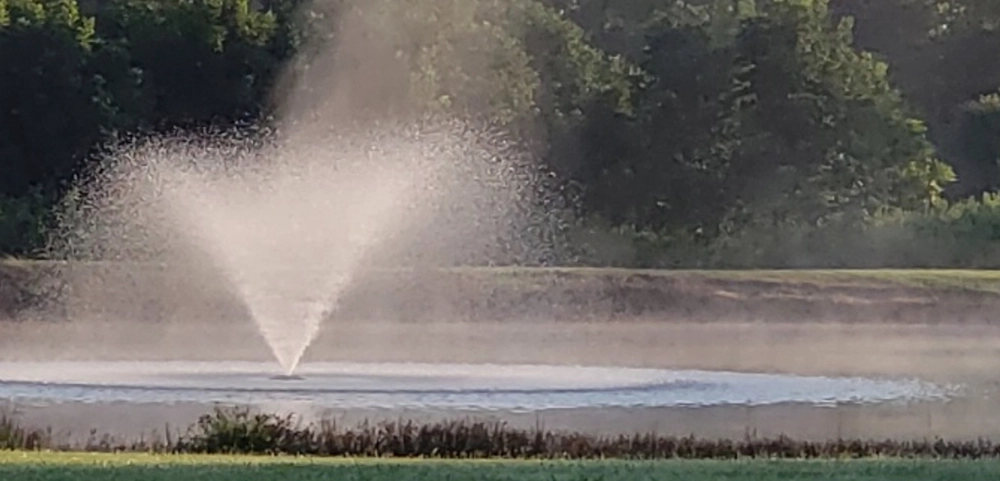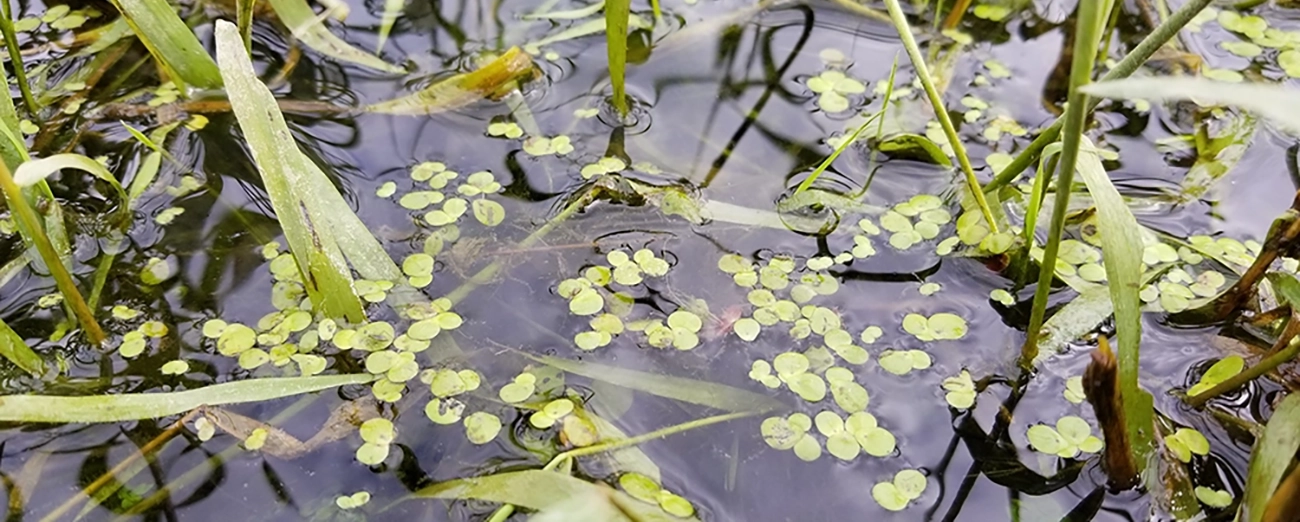
How to Effectively Control Pond Weeds
Table of Contents
• Identifying the Problem
•.Prevention is Key
• Control with Pond Chemicals
• Mechanical Control
• Aeration & Pond Fountains
• Pond Maintenance Plan
• Conclusion
• Other Resources
If you own a pond or lake in North Carolina, you know how important it is to keep it looking beautiful and healthy. However, if you’re dealing with pond weeds, you may be facing a frustrating and challenging situation.
Pond weeds can quickly take over a pond or lake, causing a range of problems, from decreased water quality to decreased property value. Additionally, foul odors and the pond’s fish habitat can not flourish in these static waters where the oxygen levels are depleted.
Fortunately, there are effective ways to control aquatic weeds in your stormwater ponds.
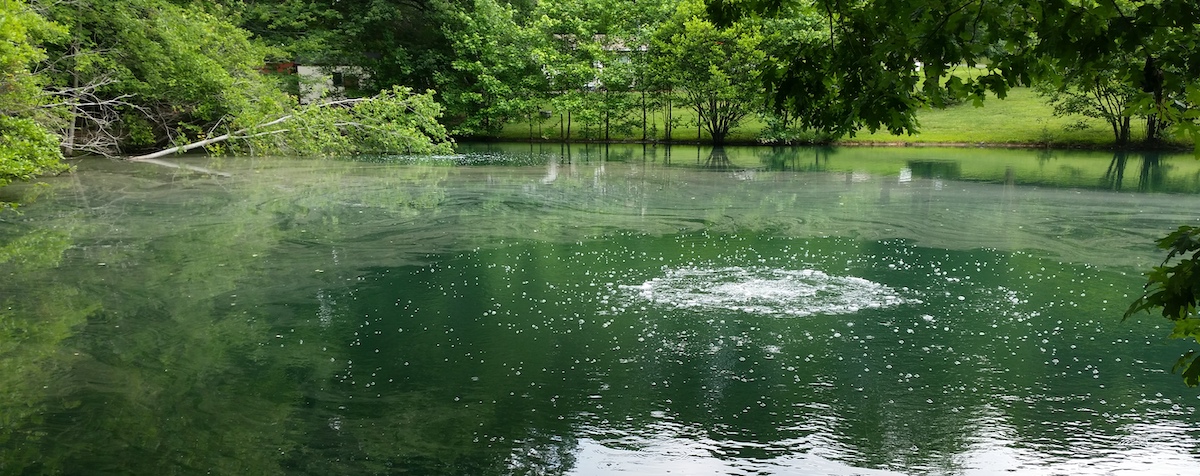
Identifying the Problem
The first step in controlling weeds in your stormwater pond is to identify the problem. Aquatic weeds come in many different forms, including algae, cattails, duckweed, and water hyacinth. Each type of weed requires a different approach to control it effectively.
The best way to identify the problem is to consult with a professional who can help you determine the specific type of weed in your pond.
To help you determine what type of weed in pond or algae is overtaking your pond, visit the Pond Lake Management Algae and Weed Identification page. For additional help with pond weed control call Pond Lake Management or request a Pond Assessment.
Pro Tip
Never fertilize to the edge of a pond or lake. Fertilizers will run off into ponds during rain storms or watering and promote the growth of harmful weeds and algae. We suggest establishing a twenty-yard “Fertilizer Free” buffer zone from the pond’s edge.
Pond Lake Management can help control pond weeds
Prevention is Key
Prevention is the best way to control aquatic weeds in your stormwater pond. Some of the most effective ways to prevent aquatic weeds from taking over your pond include reducing nutrient inputs, minimizing disturbance to the shoreline, and installing barriers to prevent the spread of invasive species.
Additionally, you can plant native vegetation around the pond to help absorb excess nutrients and provide a buffer zone to protect the shoreline. Some species of fish can help control weeds and grass in ponds. View our blog post on “The Green Carp and it’s role in Fish Pond Maintenance.”
Control with Pond Chemicals
If prevention methods are not enough, chemical control may be necessary to effectively control aquatic weeds in your stormwater pond. There are many different herbicides and algaecides available that are specifically designed for aquatic use.
It’s important to follow the label instructions carefully when using these products, as they can be harmful to fish and other aquatic life if used improperly. If you know how to properly use weed control chemicals visit our full selection of Algaecides, Herbicides, Water Dyes & Surfactants.
Mechanical Control
Mechanical control is another option for controlling weeds in your stormwater pond. This can include hand pulling, raking, dredging, and using mechanical harvesters. While mechanical control can be effective, it’s often time-consuming and labor-intensive, and may not be feasible for larger ponds or lakes.
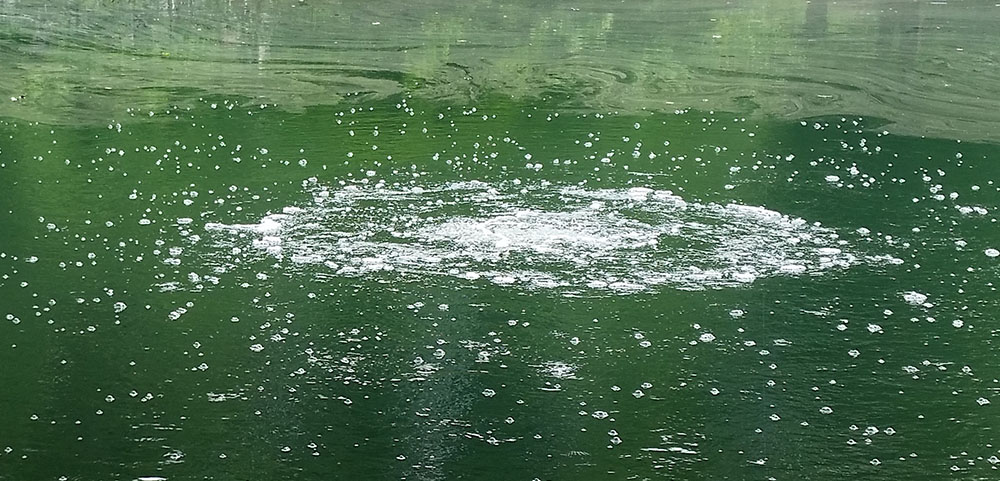
Pro Tip
Keep your pond free from trash, landscape waste, animal excrement, and other items that don’t belong in a pond. As plant life decays it turns into harmful compounds which promote weeds and algae growth.
Aeration & Pond Fountains
To keep your pond fountain lighting functioning properly, regular maintenance is necessary. Here are a few tips to help you maintain your pond fountain lighting.
Aerating the water can improve water quality and help control the growth of aquatic weeds. Aeration systems, such as fountains and diffused air systems, increase the oxygen levels in the water and promote healthy aquatic ecosystems. Pond fountains, in particular, not only improve oxygen levels but also add a visually appealing element to the pond while helping to control weeds.
Controlling aquatic weeds in your stormwater ponds requires a combination of methods tailored to your specific situation. Regular maintenance, biological control, chemical control, prevention, and aeration with pond fountains are all effective approaches to managing aquatic weeds and maintaining a healthy pond ecosystem.
A Pond Maintenance Plan
A Pond Maintenance Plan is a holistic approach to controlling aquatic weeds that combines prevention, chemical control, and mechanical control methods. Pond Lake Management uses a combination of tactics to manage aquatic weeds in a sustainable and environmentally friendly way.
A pond maintenance plan for your pond or lake may include regular monitoring, water quality testing, and the use of multiple control methods as needed. For ongoing Pond Maintenance, Pond Lake Management can help. Our Pond Maintenance Plans
Conclusion
Controlling aquatic weeds in your stormwater pond is essential for maintaining the health and beauty of your pond. By identifying the problem, preventing future weed growth, and using appropriate control methods, you can effectively manage aquatic weeds in your pond or lake. Whether you’re a pond owner, farmer, homeowner association, apartment complex, resort, or school, taking steps to control aquatic weeds can help protect your property and improve the overall health of your pond.
For more information about stormwater pond maintenance and aquatic weed control, view more of our blogs. We provide expert advice and guidance to help you maintain a healthy and attractive pond environment! Contact us today for more information!
Thank you for reading. We hope this article has been helpful in understanding how to effectively control aquatic weeds in your stormwater ponds!
Other Resources:
USEPA: Stormwater Maintenance
SCDHEC: “A Citizen’s Guide to Stormwater Pond Maintenance”
University of Florida, IFAS Extension: “STORMWATER POND MANAGEMENT: WHAT YOU NEED TO KNOW ABOUT AERATION”
North Carolina State University Extension: “Maintenance of Stormwater Wetlands and Wet Ponds”
North Carolina State University Extension: “Weed Management in Small Ponds”
